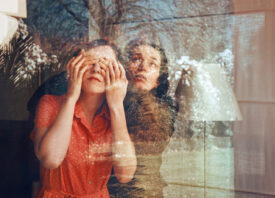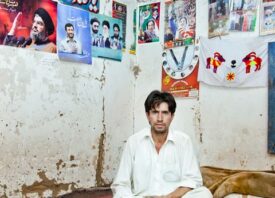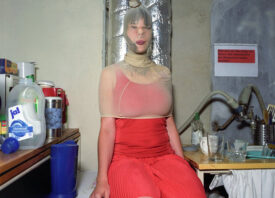Search this site
Portraits of Elderly Peasant Women Who Continue to Wear Traditional German Costumes
Anna Katharina Haber, Hesse, 2014
Anna Schaefer, Schaumburg, 2010
Engel Marie Meier, Schaumburg, 2011
For Village Queens, German photographer Eric Schuett tracks down and captures the last remaining women living in rural communities throughout Germany and into Alsace who still adhere to the traditional costuming that once dressed the majority of the village population.
Schuett, who has always had a passion for history, fell into photographing these women largely by chance while researching cobblers, blacksmiths, and basket-weavers living in remote regions of the country. For more than a decade, he has worked at a museum dedicated to preserving the memory of village life in Southwestern Germany, but nothing could have prepared him for the moment in which he was introduced to Maria Anna Griessbaum, a ninety-something woman living in Black Forest. Seeing her in her traditional attire, he says, was like being catapulted into the past, and after hearing her stories—she once worked as a maid on a wealthy family farm—he felt the first pangs that would eventually lead him in search of these elderly peasant women, whom he believes will sadly die out within the coming years.
The photographer located his subjects by visiting various museums and consulting historical texts, and he contacted each by phone before planning his trip to their homes. Sometimes, as he puts it, he was “too late,” and a woman he wanted to photograph had died before he could get in touch with her. Many were reserved and unwilling to sit for a portrait, but others welcomed Schuett into their houses, some of which had been in their families for generations.
Because of their old age, says Schuett, most of the women spend their days at home, resting, doing housework, or tending to their gardens. In some cases, they need help from family members in getting dressed, but they all keep up with their traditional outfits. They dress according to a variety of factors; over the last centuries, passersby used the colors and silhouettes of women’s outfits to gage their age, marital status, place of origin, religious sect, and class. Different outfits are designated for the home, the church, and ceremonies like weddings, funerals, and Christian holidays.
The mid-20th century, notes Schuett, was when things really started to change, and when more and more women began eschew traditional outfits in favor of more urbane attire. These days, it’s quite rare to find a woman who dresses according to the old rules, even in remote villages. Where traditional outfits were a fact of life a century ago, these women now stand out amongst their communities. The reason to keep up this style of clothing varies greatly from woman to woman; some have husbands who prefer it, where others are making a personal statement about their pride in their heritage. Some could not afford to buy new clothes; a few continued the tradition simply out of habit. Should they fall ill, the photographer notes, they might have to give up the complex outfits, as they are challenging to assemble.
Since he began the project, many of the women Schuett encountered have passed away. It’s not nostalgia for days past but a reverence for the women themselves that motivates the photographer to continue to tell their stories. Life for women could be difficult in more traditional times, and he strives not to romanticize but simply to remember and to record their histories. For the most part, he concludes, they were no different than anyone else, save for an aura of contentment that surrounded their homes. Their lives, he suggests, seemed well-lived.

Anna Katharina Suessmann in mourning garb, Hesse, 2011

Anna Pawelczyk, Schaumburg, 2010

Anna Katharina Suessmann, Hesse, 2010

Emma Krahl, Lusatia, 2010

Gertrude Lesch, Hesse, 2014

Luise Ketterer, Black Forest, 2012

Maria Anna Griessbaum, Black Forest, 2009

Maria Mirtschink, Lusatia, 2010
All images © Eric Schuett






